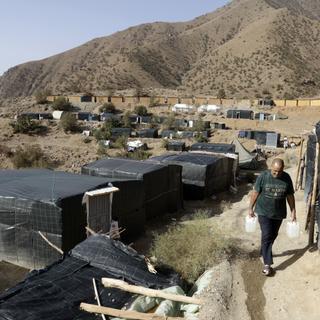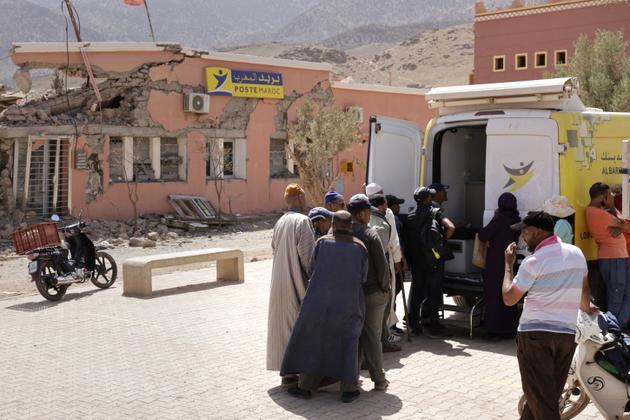


Morocco: One year after the earthquake, disaster victims are still living in tents
FeatureWhile many of those affected are still living in extreme poverty, the question of rebuilding the 50.000 homes devastated by the earthquake is raising impatience and questions.
The inhabitants of Tassloumte no longer pray in their old mosque. On the night of September 7-8, 2023, its minaret cracked as if struck by lightning, and part of its mud walls collapsed. Every Friday, the men of this tiny douar (village) kneel on huge carpets under a large tent erected for the occasion.
"It's better than nothing, even if the heat is suffocating," says Oussama Ait Oumghar, a twenty-year-old barber. So, on the edge of Route Nationale 7, which tourists from Marrakech use to reach the High Atlas, a sign has been put up: "Appeal to benefactors to rebuild the mosque." Generous people driving through Tassloumte can call the telephone number displayed below.
The earthquake, which killed almost 3,000 people, only lasted a few seconds, but its traces are still everywhere. Tassloumte escaped well. Oussama lives with his parents in a partially collapsed house, but there are still two rooms that can be used until the house is rebuilt.
"It's not a life"
Elsewhere, it's a different story. Going deeper into the province of Al Haouz, the hardest hit by the earthquake is to find the desolate sight of entire douars swept away by the tremor and neighborhoods razed to the ground in towns and cities such as Amizmiz. Here and there, tents shelter victims who have lost almost everything. In Asni, they sleep under perfectly aligned blue tarpaulins. In Talat N'Yaaqoub, conditions are more basic. The moqaddem, a representative of the state, drops in from time to time. "We're cold, we're hot. This is no way to live," an elderly woman calls out to him.
In Moulay Brahim, the zaouïa ("religious establishment") that used to welcome thousands of visitors is no more. The commune has lost its biggest source of income. Part of the town has been declared unbuildable or at risk, and clearing operations have been delayed while the authorities identify safe ground. Nearby, makeshift barracks made of plastic sheeting, planks of wood, and reeds shelter around forty people, mainly elderly women.

"My husband lives in a tent a little higher up," says one of the women, who finds herself alone in a prefabricated building, one of the few in the camp, donated by a private individual in Rabat but too small to accommodate the couple. Inside, the bare minimum: a mattress, blankets, a teapot, and kitchen utensils. Public toilets for washing. For food and clothing, solidarity and emergency aid of 2,500 dirhams a month (around 230 euros), which more than 63,000 families have officially been receiving for a year. But payments will stop next month.
You have 61.55% of this article left to read. The rest is for subscribers only.
